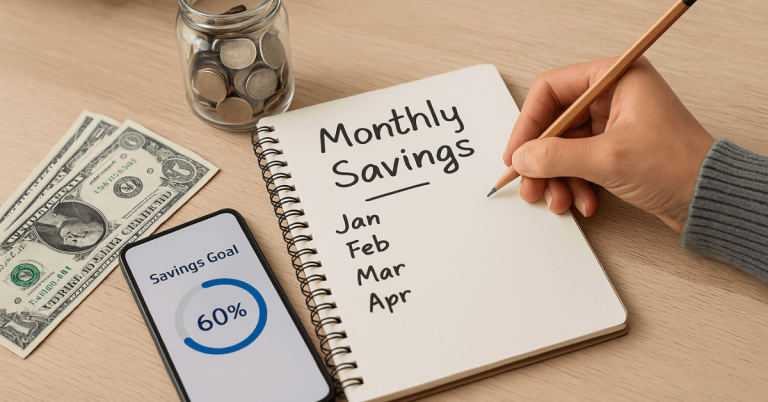Planning your finances is easier when you understand your yearly costs. Many people struggle with surprise bills because they fail to plan for annual expenses in advance.
Doing so keeps your cash flow stable and reduces stress. This guide explains practical ways to organize, save, and stay prepared all year.
Identify Your Annual Expenses
Start by knowing what you need to pay throughout the year. Annual expenses include recurring payments that appear once or twice every year, such as insurance or registration fees.
Identifying them helps prevent surprises and allows better control over your spending. Once you know your yearly obligations, you can plan your savings strategy properly.
Common Examples of Annual Costs
Many yearly costs are predictable and easy to overlook. Recognizing them helps you see where your money goes.
- Insurance premiums such as car, health, or home coverage. You can check USA.gov’s insurance guide for common coverage types.
- Taxes and license renewals including property tax and vehicle registration, as outlined by the IRS official site.
- Education fees like tuition or school supplies, which can be planned using the National Center for Education Statistics.
- Holiday and travel expenses which usually repeat each year, with cost estimates found at Statista.

Review Past Transactions
A simple way to ensure you don’t miss anything is to check last year’s statements. Look for repeating charges or transfers.
This method helps identify smaller payments like digital subscriptions or memberships. Keeping this list updated every few months makes future planning easier.
Estimate Your Annual Total
After identifying your expenses, calculate their total cost. This number gives a clear picture of how much you need to set aside.
You can use budgeting tools or spreadsheets for better accuracy. Add a small buffer for inflation or price increases to avoid being short later.
Create a Realistic Estimate
Be honest about your spending. Avoid guessing—use actual amounts from receipts or bills. If an amount changes yearly, take the highest value from the past two years. Overestimating slightly is safer than coming up short when payments are due.
Divide Your Costs Into Smaller Goals
Once you know the yearly total, break it into smaller monthly or weekly goals. This method makes saving more manageable and consistent.
It also prevents financial pressure during months with multiple bills. You’ll find that small, regular deposits grow faster than you expect.
Practical Saving Breakdown
If your annual insurance is $600, saving $50 monthly reaches that goal easily. You can automate transfers into a separate account to avoid forgetting.
Some people prefer weekly saving targets, which can fit better for variable incomes. The key is discipline and regularity.
Use a Separate Account
Keeping your savings in a different account prevents accidental spending. This separation helps you visualize your progress and ensures the money stays untouched until needed.
A high-yield savings or online account is ideal since it adds small interest earnings. Learn more about secure savings from the Consumer Financial Protection Bureau.
Benefits of Dedicated Accounts
Setting up a dedicated account ensures your savings stay organized and secure. The following breakdown explains how having one can improve your budgeting and prevent unnecessary spending.
- Easier to track funds reserved for specific goals.
- Reduces the temptation to mix daily spending with long-term savings.
- Simplifies reviewing your financial status anytime.
- Creates a habit of financial discipline for future planning.
Prioritize and Adjust as Needed
Not all annual expenses have the same urgency. You should know which ones protect your financial stability and which can wait.
Essentials like insurance or tax payments must come first. Entertainment or non-essential travel can follow once the important costs are secured.
Regular Review
Review your expense list quarterly. Income changes or new responsibilities might affect how much you can save.
Adjust your priorities without guilt—planning is about flexibility, not perfection. Staying consistent matters more than saving the exact same amount every month.
Track Progress Throughout the Year
Monitoring your savings progress keeps you accountable. Even the best plans fail without regular follow-up.
Set a reminder to check your progress monthly. You can use simple budgeting apps like Mint or You Need a Budget (YNAB) to visualize growth.
Benefits of Ongoing Tracking
Tracking ensures you meet your targets on time. It also helps detect unnecessary spending habits early.
Making small corrections monthly avoids large adjustments later. Over time, tracking becomes a natural part of your financial routine.
Prepare for Unexpected Annual Costs
Some expenses are unpredictable but unavoidable. Examples include medical bills, car repairs, or emergency travel.
Having an additional fund for these prevents disruption to your primary budget. Treat it as a flexible buffer rather than strict savings.
Building a Safety Buffer
Start by saving at least 5–10% of your annual budget for emergencies. This amount grows into a strong cushion over time.
You can keep it in the same account but separate it mentally from fixed expenses. Being ready for surprises is part of smart financial planning.

Review and Update Yearly
Your financial situation will change with time. Reviewing your plan each year ensures it still fits your current needs.
New goals, inflation, or family events can all impact your expenses. Adjusting your strategy keeps your finances realistic and aligned.
Annual Checkup Routine
Choose a fixed date every year—like January 1st—for reviewing all yearly costs. Remove outdated items and add new ones.
Compare what you planned with what you actually spent. Continuous updates make your financial plan stronger each cycle.
Tools and Resources to Help You
Digital tools simplify managing annual expenses. They provide reminders, automatic transfers, and detailed insights. You can pick one that matches your comfort level and financial habits.
- Budgeting apps such as Mint, YNAB, or PocketGuard for tracking.
- Bank sub-accounts offered by most institutions like Chase or Bank of America to separate savings goals.
- Spreadsheets using Google Sheets for manual control and visual records.
- Online calculators such as those on NerdWallet for adjusting savings with inflation or interest.
Common Mistakes to Avoid
Avoiding simple errors can make your financial plan more effective. Many people start strong but lose consistency. Recognizing mistakes early helps you stay on course.
- Forgetting to include small or irregular payments.
- Underestimating total costs due to inflation.
- Using the same account for spending and saving.
- Waiting until the expense is due before saving.
Expert Financial Tips
Learning from professionals can enhance your results. Financial experts recommend strategies to keep your plan reliable and flexible. These habits help maintain stability even during uncertain times.
- Review your insurance contracts yearly to reduce costs with advice from Insurance Information Institute.
- Automate savings transfers and bill payments as recommended by Federal Trade Commission.
- Keep one day each year for a financial review following CFPB guidelines.
- Track rewards or cashback points to offset expenses using Credit Karma’s tools.
Final Thoughts: Stay Ahead with Smart Planning
Managing yearly costs is about commitment and awareness. When you plan for annual expenses in advance, you take control of your budget instead of reacting to it.
Regular saving, tracking, and reviewing make large bills predictable and easy to handle. Start today by listing your upcoming yearly expenses—each step builds lasting financial confidence.











